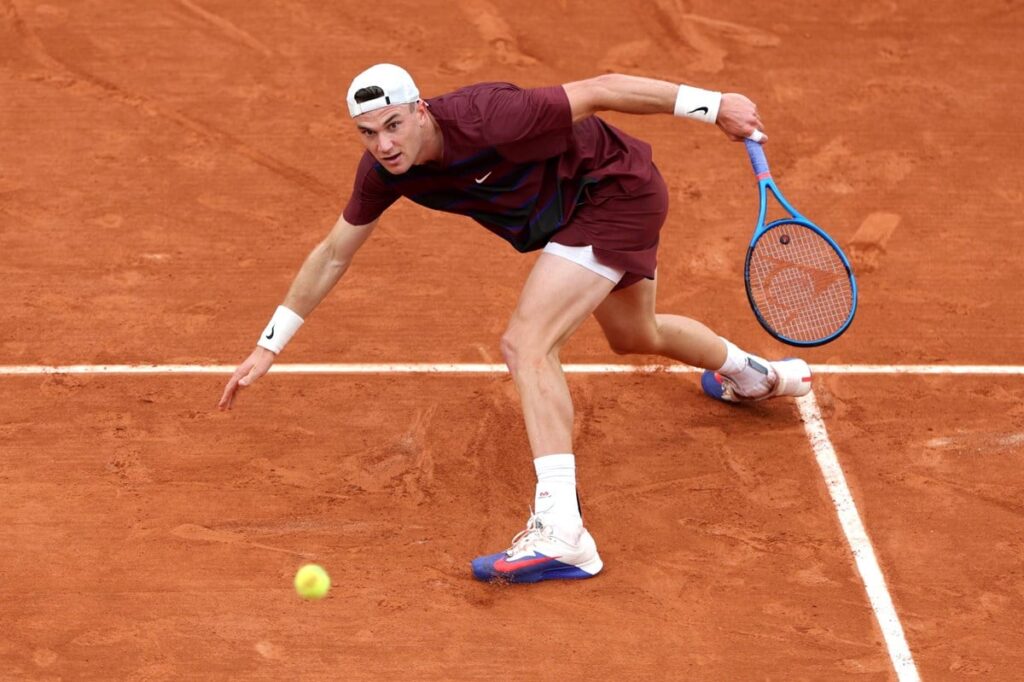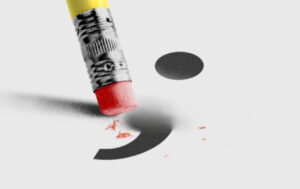As the red dust of Roland Garros continues to settle through the halfway mark of the 2025 French Open, the world of tennis finds itself in a familiar yet evolving tableau. There is brilliance and heartbreak, established dominance and emergent ambition. While legends like Rafael Nadal received emotional farewells amid standing ovations, the next generation of players have surged ahead, crafting new narratives on the same historic clay. With seeds rising, former champions exiting prematurely, and teenage prodigies stunning seasoned veterans, the tournament has already delivered more than its share of drama.
This editorial grades the performances of the tournament’s top figures in men’s and women’s singles, while taking stock of doubles action, surprise breakouts, and key storylines that promise to define the second week in Paris.
Men’s Singles: Djokovic’s Ruthless Form, Alcaraz Ascending, and Medvedev’s Early Meltdown
A+ Range: The Contenders Who’ve Stamped Their Authority
Novak Djokovic (SRB) – A+
In a post-Nadal era at Roland Garros, Novak Djokovic stands tall, perhaps sensing this is his tournament to lose. The Serbian maestro, chasing a record 25th Grand Slam, has performed with surgical precision. He has yet to drop a set, neutralizing both Pierre-Hugues Herbert and Roberto Carballés Baena with relentless baseline aggression and an unshakable mental game. His return of serve has been exquisite, and the occasional flair of drop shots only cements his clay-court credentials. A date with Alcaraz in the semifinals is looming—and would be a must-watch clash of generations.
Carlos Alcaraz (ESP) – A
The prodigious Spaniard continues to evolve into the heir apparent to Nadal’s clay throne. After minor forearm concerns ahead of the Open, Alcaraz has erased doubts with dominant displays, including a comprehensive third-round win over Sebastian Korda. His power, court coverage, and youthful intensity have made him a crowd favorite, and his maturity—rare for 21—makes him one of the few with a real shot at derailing Djokovic’s campaign.
Jannik Sinner (ITA) – A-
The newly minted World No. 1 has passed the midterm exam with grace and grit. Sinner’s surgical groundstrokes and improved first serve have carried him through some testing moments. His win over veteran Richard Gasquet showed poise, though he did flirt with lapses in focus. Sinner has not yet been forced into a five-setter—how he fares under extended pressure may decide whether this tournament marks his coronation or caution.
B Range: Strong Starts with Questions Ahead
Alexander Zverev (GER) – B+
Zverev has quietly made it to the second week, bringing his booming serve and steady backhand along for the ride. He dispatched David Goffin with composure and has shown flashes of brilliance. However, unforced errors continue to plague his forehand wing. Having recovered from his horrific ankle injury in Paris two years ago, Zverev’s story would be a sentimental triumph—but he’ll need sharper shot selection moving forward.
Casper Ruud (NOR) – B
Twice a finalist here, Ruud has glided through the early rounds, showcasing his smooth footwork and trademark looping forehand. Yet, he’s been largely unchallenged. His real test begins now, with potential clashes against power-hitters and baseline grinders who may force him out of his comfort zone.
C and Below: Disappointments and Departures
Daniil Medvedev (RUS) – C-
The clay enigma continues. Once again, Medvedev showed his unease on the Parisian dirt, falling in the second round to Tomas Machac. His upright movement and flat strokes don’t translate well on clay, and his frustrations manifested in frequent racquet smashes and verbal outbursts. For a player of his caliber, the continual early exits from Roland Garros feel like a recurring nightmare.
Stefanos Tsitsipas (GRE) – C+
The 2021 runner-up entered the tournament with high hopes but has looked out of rhythm. Though he survived a brutal five-setter against Daniel Altmaier, his one-handed backhand remains vulnerable against high-bouncing topspin. His body language suggests a player unsure of his tactical identity—he’ll need to rediscover that fast.
Andrey Rublev (RUS) – D
Rublev’s first-week exit—delivered via a straight-sets defeat to Matteo Arnaldi—was a masterclass in self-destruction. His powerful ground game failed him under duress, and his emotional volatility undermined any comeback effort. A contender in theory, Rublev has again proven unable to translate ATP success into Slam performance.
Holger Rune (DEN) – D+
Rune’s loss to Francisco Cerúndolo was not entirely unexpected given his turbulent 2024 season, but it’s still a letdown. The 21-year-old has the weapons but lacks stability, both in his team and within matches. A coaching carousel and apparent fitness lapses leave more questions than answers.
Women’s Singles: Świątek’s Clay Dynasty, Andreeva’s Ascension, and the Gauff Renaissance
A+ Range: Clear Leaders in Form and Focus
Iga Świątek (POL) – A++
The queen of clay is in divine form. Świątek’s dominance thus far borders on absurd—she’s dropped just seven games total through three rounds. Her topspin-heavy forehand, footwork, and court IQ have no peer in the women’s draw. The Pole is a terrifying blend of consistency and aggression, and barring injury, she appears destined for a fourth Roland Garros crown.
Coco Gauff (USA) – A-
Now armed with a Grand Slam title from the US Open, Gauff has matured into a more tactically sharp and mentally resilient player. Her second-week presence has almost become expected. While her forehand remains mechanically vulnerable, her backhand, speed, and return game are weapons. A semifinal showdown with Świątek could be career-defining.
B Range: Dangerous, But Uneven
Aryna Sabalenka (BLR) – B+
When Sabalenka is on, she’s unstoppable; when off, she’s her own worst enemy. The Belarusian powerhouse has bludgeoned her way through early rounds but has also racked up double faults and unforced errors. Her recent form suggests she could challenge Świątek—if she doesn’t implode first.
Elena Rybakina (KAZ) – B
Rybakina’s effortless power makes her a threat on any surface, and her calm demeanor serves her well. However, physical fitness has often held her back—if her body holds up, she could be a stealth pick for the final. Her straight-sets win over Sloane Stephens was particularly commanding.
C and Below: Injuries, Inconsistencies, and Early Exits
Ons Jabeur (TUN) – C-
Jabeur, long beloved for her artistry, has looked far from her best. Battling physical limitations and unable to find rhythm, she bowed out meekly in the third round. Her ability to inject variety into rallies has deserted her, and the window for a Grand Slam title is narrowing.
Markéta Vondroušová (CZE) – D+
The reigning Wimbledon champion hasn’t found her groove on clay. Her sliced backhands and disruptive style, effective on grass, seemed powerless against more physical baseliners. A second-round exit marked another disappointing Slam for the talented Czech.
Breakout Stars and Surprise Packages
Mirra Andreeva (RUS) – A
Still only 17, Andreeva has captivated Paris. Fearless, strategic, and technically sound, she’s played like a seasoned pro, knocking out top seeds with clinical precision. Her game is built for clay—heavy topspin, quick transitions, and nerves of steel. A Cinderella semifinal isn’t out of the question.
Jasmine Paolini (ITA) – B+
The 28-year-old Italian has quietly strung together her best Grand Slam performance. A nimble mover and tireless defender, Paolini’s upsets have come via resilience and clean timing. She’s this year’s late-bloomer success story.
Doubles & Mixed: Veteran Stability and Wildcard Thrills
Men’s Doubles:
Ivan Dodig and Austin Krajicek have been businesslike in their title defense, brushing aside opposition with chemistry and clean volleying. But the American-British tandem of Rajeev Ram and Joe Salisbury—champions on hard courts—have shown signs they could disrupt the hierarchy.
Women’s Doubles:
Veteran Hsieh Su-wei remains the magician of doubles play. Teaming with Elise Mertens, she’s led a tactically superior campaign thus far. Their mix of variety and anticipation has overwhelmed more powerful but less coordinated pairs.
Mixed Doubles:
The novelty act of Andy Murray and Emma Raducanu has delivered moments of magic—particularly in tie-breaks—but inexperience has cost them under pressure. Still, their run has reenergized fan interest in the mixed format.
Second Week Forecast: The Storylines to Watch
Djokovic-Alcaraz Showdown on the Horizon:
Barring a major upset, the semifinals should host a generational clash between Novak and Carlos. Their last clay meeting in Madrid was electric—expect something even greater in Paris.
Świątek’s Attempt at Clay Immortality:
With a fourth French Open crown on the line at just 23, Świątek is not just winning—she’s shaping a legacy. Only Nadal has been more dominant on this surface in modern history.
The Sinner-Alcaraz Rivalry Continues:
If Jannik Sinner reaches the final, it could reignite the sport’s next great rivalry. Their contrasting styles—Sinner’s surgical precision vs. Alcaraz’s improvisational fire—are made for five-set drama.
Can Gauff Break the Świątek Curse?
Świątek has dominated Gauff in previous meetings, but if Coco can bring her A-game, the semifinal could be an inflection point in her career arc.
Cinderella Runs Incoming?
From Mirra Andreeva to Jasmine Paolini and even Zverev in the men’s draw, there’s room for surprises. Roland Garros has long favored the unexpected.
Clay Still Reigns Supreme
The 2024 French Open is a testament to the enduring mystique of clay-court tennis. It demands not just power and technique, but patience, intellect, and adaptation. As legends make their exits and prodigies make their mark, the tournament is perfectly poised for a blockbuster second act. Whether it’s a coronation for Świątek, a milestone for Djokovic, or a breakthrough for a new generation, one thing is certain—Roland Garros, as ever, remains the sport’s most unpredictable and poetic battlefield.
No comments yet.







